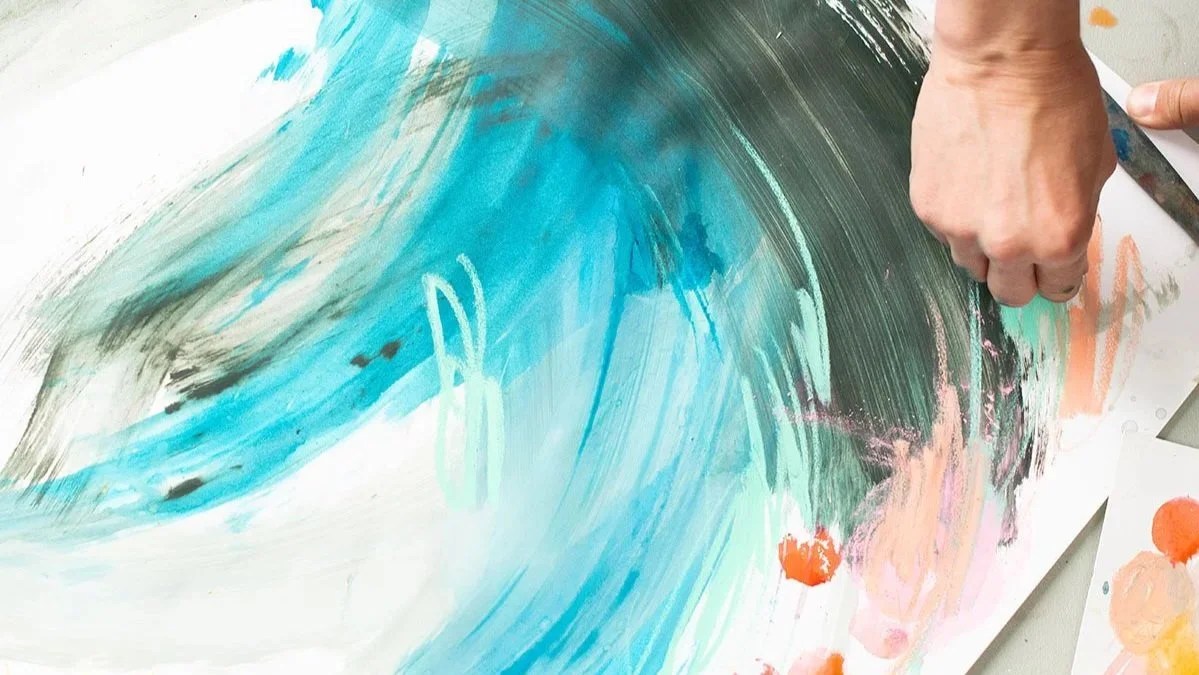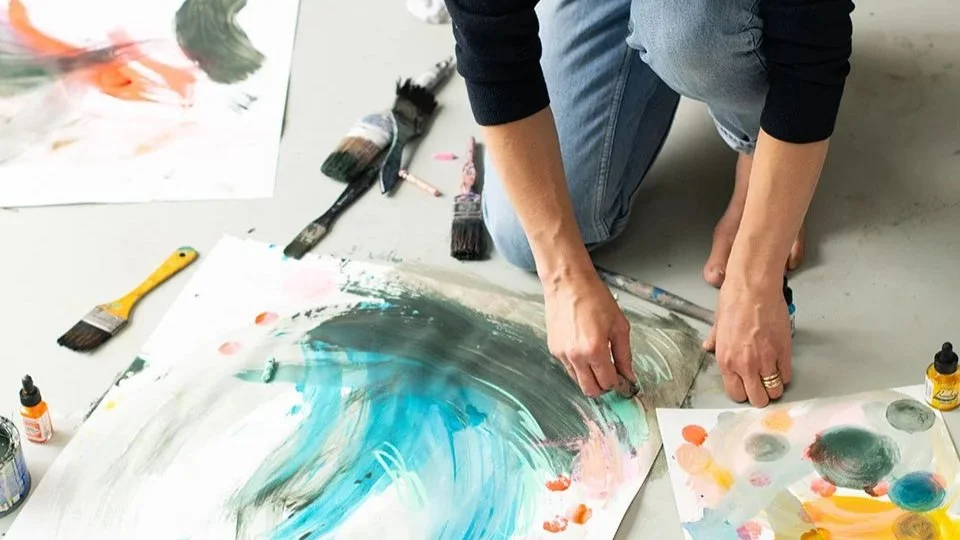Art in Times of Ill Health
In this article written for AccessArt Treehouse I share the story behind my route into arts and health and my observations of the emotional and physical impact that creativity can have in times of difficulty.
Dressed in blue PPE I follow a hospital worker into a small isolation room where a teenage girl is in bed attached to an orchestra of medical equipment. Her younger brother, keeping her company since the end of his school day and now completing his maths homework, sits quietly next to her monitor. I ask if they’d like to make a small cardboard house filled with their choice of colours, writing or drawings.
From a fan of coloured paper and pens they silently select their palette, nodding appreciatively at the offer of something other than maths or medicine in these sterile four walls.
I’m a visual artist and illustrator, also a teacher and facilitator. Workshops for adults looking to develop practical techniques or more exploratory ways to create art have been the mainstay of my teaching career which originated in short courses at UAL. They’re fun but intentional, often attracting students looking to progress a career in illustration, hone a particular skill or address a creative block. More recently however my scope of these facilitated art sessions has broadened from creating in schools with children experiencing emotional and mental health difficulties, to mentoring recently-released prisoners, and from workshops with hospice visitors, to teenager cancer in-patients. These groups have a different energy, often something less ambitious but equally as purposeful; a perspective shaped by life events.
Branching out to work with carers, patients, ex-offenders and healthcare workers has shifted my view of art when lives are at their most difficult. I'll admit to having once been cynical about art’s purported therapeutic and transformative effects, especially in the face of human extremes of incarceration, chronic illness or terminal diagnosis. With such acute practical, medical or existential needs, I thought, how could creativity offer anything more than frivolous embellishment at best or, at worst, offensive condescension? This belief shifted as I started to see firsthand that even in the darkest of times, the urge to create can feel as fundamental as any basic practical need.
My professional life began with a series of non-arts jobs, including working with Samaritans, a charity offering emotional support to people in moments when life feels unbearably bleak. During this time, I also weathered in quick succession the deaths of several close family members, bringing the inevitable dependence on medical care and hospice services along with end-of-days reflection on life’s meaning. It was this combination of experiences that led me to explore the seemingly disparate areas of arts and health.
There’s plenty of neuroscientific evidence demonstrating the benefits of art to individuals and communities, such as improved recovery rates from illness, reduced reoffending rates, increased group empathy and social connection, plus, at times, a powerful tool for dealing with trauma. Yet it was witnessing for myself the enrichment that art seemed to bring to my students that most convinced me of its potential restorative effects. For some the habit of sketching had provided a lifeline during lockdown, whilst for others, doodling relaxed an anxious mind while awaiting major surgery. Designing characters for estranged children had helped one mother sustain a familial thread, and hand printing cards collectively in a hospice nourished a community without a need to verbalise the obvious.
This is not to suggest that making art is always straightforwardly cathartic. In my own practice, and for many of my students, it can also be incredibly frustrating. So whilst for some the act of creating can be (and needs to be) simply meditative - a momentary and welcome distraction from pain - the truth is that for each of us the benefits vary - and it may actually be in the creative tussle that meaning is found.
Illness, grief, imprisonment, disability - they force a loss of control. The act of choosing to move a pen across a page with purpose, to shape a lump of clay into a considered form - however imperfectly - offers agency over materials. The ability to wrestle something new into the world, that didn’t previously exist without our actions, happens despite our own limitations. We become the author of this outcome in this moment.
Certainly, for children with SEND, frustrated within a mainstream school setting, I see a delight and a growth in confidence at the rebelliousness offered by art. An invitation to create with hands, to get messy, to choose their own tools and materials, and make their own decisions about how to work with them - nothing remarkable, yet surprisingly rare in a system that requires conformity and measurable achievements. These opportunities (and not just for children) bring empowerment, a small act of insurgence against life’s circumstances. They also offer a voice, a way of communicating when verbal or written channels feel overwhelming or out of reach. Art can become a way of sharing deeply personal experiences that otherwise sit beyond words.
I have found that creative sessions in alternative settings often require adapting, for example, scissor-free activities on a teenage mental health ward, art on clipboards for patients immobilised by treatment, simple repetitive habits for days of low energy or high pain levels, or flexibility around chaotic lives and understaffed systems. These are adjustments that offer opportunities to be playful, rather than limiting constraints. In these contexts the form itself need not be sophisticated or derived from any formal training in order to have value.
When the arts are driven by a fundamental urge to make, repair, or explore uncertainty with creative curiosity, they have the potential to offer a powerful alternative way of being - whether as catharsis, frustrated self-expression, a social connection or act of individual agency. Though the arts may not cure every condition or reverse a sentence, they can act as a valuable reminder of what it is to be human - especially in times of personal and collective ill health.
Article written by Laura McKendry for AccessArt Treehouse, July ‘25



